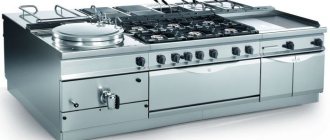Reasons for high demand
The high level of demand for clean drinking water is due to the following reasons:
- negative environmental factors. High concentration of chemicals and other harmful impurities in a shallow aquifer. To obtain clean drinking water, it is necessary to drill wells an order of magnitude deeper than the level of a conventional well;
- benefits of artesian water for the human body. Ordinary tap water carries a large amount of sediment in the form of harmful substances. The method of its extraction and purification is dangerous to the health of the body;
- proper functioning of irrigation systems. The thicker the water layer, the greater the volume of incoming water. This condition requires drilling a deep well;
- shallowing of water bodies. To prevent this threat, drilling wells at depth is required.
Risks
The main risks for this type of activity are:
- High level of competition in the region.
- Application of dumping prices for services by new players in the services market.
- Technical malfunctions of drilling equipment.
- Low qualifications of employees involved in the provision of services.
As mentioned above, this business project is designed for entrepreneurs who will engage in well drilling as an additional activity. Consequently, the main way to minimize risks is a competent marketing policy throughout the entire business and the possibility of its diversification.
Main types of drilling rigs
All small-sized drilling rigs are divided into two types:
- machines powered by hydraulic drive;
- electric drive systems.
The advantage of the first devices is increased power. They are equipped with gasoline and diesel engines and are capable of drilling artesian wells up to 250 m deep. Their disadvantage is less maneuverability and greater weight.
The second option is less powerful. It is limited to the organization of wells up to 100 meters. But these are cheaper and more mobile systems that provide the same quality of work.
Business organization
It should be understood that manual drilling of wells is a seasonal business. As a rule, the main wave of demand for personal wells occurs in May, but it subsides no earlier than the end of August. That is why novice entrepreneurs should carefully calculate the preparation time so as not to miss all orders at the very beginning of the season. Preparation for drilling a well itself involves purchasing and testing special equipment. Beginning entrepreneurs are advised to pay attention to mobile drilling rigs available for transportation. As a rule, such drills weigh no more than seventy kilograms and are assembled right on the job site in a matter of hours.
What equipment to choose for the work and drilling process
To provide services for organizing water wells, you must have a small-sized drilling rig and a pump with a motor engine.
Beginning entrepreneurs prefer inexpensive installations with an electric motor.
They are reliable, and the kit includes detailed printed and training material on using the system and all the nuances of the work. To be more competitive, some companies provide the services of a one-time visit by a specialist who teaches work directly on site.
Promotion of services
An advertising campaign should begin in the winter so that by the season there is already an established customer base.
To do this, you can take the following steps:
- submit advertisements to printed and electronic thematic publications, as well as to popular advertising blocks;
- use advertising banners in private construction sites that do not have a central water supply system;
- order business cards and then distribute them through clients and enterprises with related activities;
- create your own website, which will describe in detail the proposed technologies, features and nuances of drilling water wells, as well as the advantages of ordering these services from your company.
Download a free business plan for drilling water wells (.rar file):
Example 1
Popular drilling methods
There are several ways to drill wells. The choice depends on the hole drilling technique, further maintenance and the purpose of the well. The article describes the most commonly used drilling methods.
Screw
This method is otherwise called rotational. It is the fastest and most efficient, does not require large material costs, and a regular truck is suitable for transporting tools. Using the auger method, you can drill a hole for a well without much effort. The advantage is the low price of the drilling method; the disadvantages include the impossibility of drilling too hard rocky soils and the difficulty of drilling sticky clay soil.
Shock-rope
The shock-rope method is the very first one existing today. The method does not require a large number of machinery and equipment, and therefore is not expensive.
To start work, you will need the following tools: winch, impact bowl, tripod. The principle of operation is as follows: it is necessary to lift the impact bowl using a cable that is tied to a tripod and secured with a winch. It is better to carry out the work as a team, since this method of drilling requires physical strength.
Helps drill a well up to three hundred meters. Among the advantages, one can note the low cost, and the disadvantage is the ability to work only with soft soil, but the main disadvantage is the duration of the drilling process.
Hydro drilling
Hydrodrilling involves breaking through the soil using powerful water pressure. Sometimes the soil simply turns into a hollow hole. If it is too hard, a break is made in the ground, and everything else is knocked out with a chisel. The method is excellent for drilling loose soil and sand. The depth of the well with this type of drilling can reach 15 meters.
Water well drilling technology
If you do not have experience in performing this process, then you should hire a qualified driller for a permanent position. It is very important to carry out work according to all the rules. Typically the following stages occur:
- They examine a certain area of land for the presence of groundwater. You need to find out their depth, quality and calculate a better place for drilling.
- After assessing the geological data, you can draw up a detailed work plan, write out an estimate, and clarify all the details. Also at this stage, permitting documentation is collected.
- Create a hole of the required size and install the pipe.
- The joints of the structure should be connected using a welding machine or coupling.
- All parts are treated with sealant and the pump is installed on the top.
Experienced drillers first deepen only 50-60 cm and determine the desired direction. Every half meter the drill is cleaned of extracted rocks. When the natural moisture of the soil is noticed, they understand that they have reached the aquifer. But in order to achieve a good influx of clean water, you will have to go deeper even to the impermeable layer.
If, when pumping out the liquid, dirt continues to flow through 30-40 liters, then a decision is made to additionally drill another 1-2 meters. And only when a clean source is received, a well or other system is installed to constantly supply the house or site.
Of course, in order to save money, you can do without expensive professional equipment and perform the procedure manually using a plugged filter and a spigot. But then all the work will take much longer. And the main disadvantage of such work is the limitation on the well depth of 15 meters. And since a deeper hole is most often required, customers will not be satisfied with this.
Selection of production scale
As an option, you can use a simplified (manual) technology: use a plug filter and a drill bit instead of a drilling rig. In this case, you can rent equipment with a minimal initial investment. Thus, the profitability and payback of the well drilling business will be very high, and the risks will be minimal. However, there are also disadvantages - with such equipment it is impossible to drill a well more than 15 m, so the number of potential clients will be lower.
Water delivery business
One of the ways to scale is to expand the functionality of the enterprise. If a company specializes in water production, delivery can be added to this task. This way, the entrepreneur will save on intermediary services. Another advantage of the company will be the absence of the need to buy water from suppliers.
An entrepreneur will need to invest money in four categories of expenses:
- purchase of cargo gazelles (1 – 2 pieces);
- regular expenses on fuels and lubricants;
- hiring additional drivers;
- rental of a vehicle fleet (if the delivery service is expanded).
Reference. If a businessman decides to include delivery in the list of services provided by the company, he will have to inform the Federal Tax Service about this. In form P11001, the businessman will need to indicate a new type of activity OKVED 36.00.2 “Distribution of water for drinking and industrial needs”).
Equipment selection
To organize a water well drilling business, you will need the following equipment:
- drill rods;
- drills - working plus spare;
- motor pumps;
- sleeves
Due to the significant weight of drilling equipment, it is worth purchasing a vehicle for its convenient transportation and greater mobility. However, this can be done when the activity has already gained sufficient momentum.
Video on the topic:
Manual drilling equipment
Documentation
A well drilling business requires careful preparation and proper registration. It may make sense to hire a specialist who will go through the bureaucratic step for you. Although this will require additional payment, it saves a lot of nerves and time. Be prepared for the fact that the process of registering and collecting documents will take a lot of time, so it’s worth starting early so that all the papers are ready for the season.
According to the legislation of the Russian Federation, only legal entities can engage in such work. This means you will have to apply to create an LLC (limited liability company). To do this, you need authorized capital, internal documentation of the company, a bank account and payment of state duty.
Next comes the stage of collecting permits. Drilling wells and working with subsoil requires licensing. In order to pass this stage the first time and not pay for it twice, it is better to use the help of an experienced lawyer.
Please note that some documents will have to be completed before completing each order. And although in some cases clients can independently obtain permits for drilling and operating wells, it is still better to provide such a service from a company performing this type of work. This way, you will attract more clients.
For each project you need to receive:
- approval by the RCGSEN and the Geological Center of regional significance;
- permission to drill in a specific location;
- license for the creation and operation of a new well.
And although all the documentation is associated with difficulties, this part of the work quickly pays for itself.
Registration actions
Registration of well drilling activities is the most difficult organizational stage in the formation of an enterprise of this type.
In addition to the usual steps for registering a legal entity (individual entrepreneur or LLC, opening a bank account, registering with government agencies), licensing of activities is required here. It should be remembered that this process can last six months, so it is necessary to start collecting documents in advance. It would be best to entrust the registration of the license to a professional, which will save time and nerves.
The main stages of licensing activities for drilling water wells:
- Obtaining a license for geological exploration.
- Development of a geological exploration project.
- Estimation of groundwater reserve volumes.
- Obtaining a license to use subsoil.
Video on the topic:
Well passport
Location
All activities are carried out at the customer’s site. All you need is a spacious and inexpensive space to store equipment and supplies. It is important to have security - you should not skimp on precautions. Warehouses and car depot buildings are suitable; industrial buildings that are not used for their intended purpose can also be considered as an option. Convenient transport interchange is important. At the start, work with clients can be carried out over the telephone. To assess the scope of work and geological exploration, you will travel to the customer’s site. If you have the means, you can rent a small office in the center or business district. An accountant, a customer service manager and a lawyer will work there if you decide to immediately invite this specialist to your staff.
Do you need a room?
One of the advantages of this business is that the owner does not need to rent or build any building for the operation of the enterprise. After all, all activities are carried out at the customer’s site, and preliminary communication can also take place over the phone.
You just need to find a suitable place to store the equipment and transport itself. A warehouse, garage, car depot building, or any part of an unused industrial complex will do for this. It is only important that there is a convenient transport interchange nearby.
But there is also an option for organizing a business when you rent premises somewhere in the central or business districts of the city. When opening a reputable company that works with many clients, it makes sense to accept orders in your own office. Then the office of an accountant, lawyer and manager is set up here.
Staff
For full-fledged activities, you will need to hire personnel:
- Hydrogeologist - responsible for the first stage.
- An experienced driller manages the entire process and monitors the equipment.
- 2-3 workers with low qualifications; it will not be possible to get by with fewer people, since the drilling rig weighs at least 200 kg.
- Truck driver.
- Accountant.
- Customer service manager - the number of orders, and therefore the profit of the entire enterprise, depends on him, so you cannot save on this staffing unit.
To reduce wage costs, you can perform any of the functions yourself. It depends on your skills, experience and knowledge. It makes sense to outsource accounting.
Financial model and business plan
A business plan for the sale of water reflects all aspects of the planned project - organizational, production, financial, etc. In the process of drawing up a business plan, the following sections are revealed:
- project summary. The paragraph indicates the water production format that the company adheres to. This may involve extraction and/or bottling of water;
- brief information about the company's products and its target audience. The volumes in which the businessman intends to supply water are listed. Future clients with whom the factory plans to cooperate (corporate entities, individuals) are mentioned;
- market analysis in the field of water production and determination of the competitive environment. Before starting a business, it is advisable for an entrepreneur to study the level of demand for a product in a particular region. Fluctuations in water demand may be associated with the proximity of publicly accessible springs, the number of nearby workshops, etc.;
- description of the sources from which the company extracts raw materials. The paragraph also indicates the qualities of the water and the reasons why it will be attractive to the consumer. A link is given to the laboratory in which the liquid was analyzed and its results are given;
- marketing plan. Promotional events are planned to accompany the product launch. The methods of promotion depend on the methods of cooperation. When reaching private clients, the company launches advertising on radio and TV. When targeting corporate clients, the emphasis is on website promotion and sending out wholesale offers;
- production plan. Methods for extracting water (drilling a well/treating tap water) are described. The areas of the production site and warehouse are indicated. The personnel of the enterprise are listed, indicating their positions.
Expenses and income
One of the main sections of any business plan is devoted to the financial side of the issue. An entrepreneur calculates the costs of starting a business and maintaining it in the future.
Initial Investment
The initial investment in a water company includes obtaining licenses and purchasing equipment.
Table 2. Start-up capital for starting a water production business
| Type of expenses | Cost, rub.) |
| Obtaining permits and registering an LLC | 250 000 |
| Automatic water filling line | 900 000 |
| Plastic bottle blowing machine | 800 000 |
| Ozonizer | 150 000 |
| Cleaning mechanisms | 250 000 |
| Filters (coarse + fine cleaning) | 250 000 |
| Set of molds for containers | 50 000 |
| Labeling machines | 300 000 |
| Mechanism for tightening lids | 150 000 |
| Saturator (for carbonated drinks) | 300 000 |
| Packer of bottles in film for transportation | 400 000 |
| Water containers | 300 000 |
| Freight car | 1 400 000 |
| Total | 6 200 000 |
Reference. In the first stages of company development, one truck will be enough. Additional vehicles will be purchased as the customer base expands. The profitability of an enterprise is determined by thoughtful savings at the beginning of work.
To the main expenses should be added expenses for improvement of the premises. The construction will require the following actions:
- cosmetic finishing;
- furnishings;
- conducting communications.
The funds that will be spent on these needs depend on the condition in which the building is purchased. The approximate cost of cosmetic “procedures” is one and a half million rubles.
A businessman will also need the services of specialists:
- architects from a design and architectural bureau to develop a project and draw up an estimate (the approximate cost of services is 350,000 rubles);
- marketers from advertising organizations advising on brand promotion methods (approximate costs - 200,000 rubles);
- designers and installers, whose task is to develop a safe and efficient factory layout (service cost - 400,000 rubles).
Important. To avoid unforeseen situations, it is advisable for a businessman to have a financial cushion. Funds for unexpected expenses must be at least half a million rubles.
Regular expenses
Regular expenses include those investments that are deducted on an ongoing basis. Examples of such expenses are taxes, payment of salaries, purchase of consumables, etc.
Table 3. Regular expenses for a water production business
| Expense item | Cost, rub.) |
| Payment of salaries to staff | 350 000 |
| Contributions to the Pension Fund for employees | 100 000 |
| Payment for housing and communal services | 120 000 |
| Purchasing consumables | 450 000 |
| Promotional Events | 80 000 |
| Rent | 200 000 |
| Tax deductions to the Federal Tax Service | 105 000 |
| Total | 1 405 000 |
Reference. To optimize their work with taxes, businessmen are switching to a simplified taxation system. It reduces the payout percentage and allows you to use a reduced chart of accounts.
To determine the profitability of an enterprise, it is necessary to decide on the assortment. If we assume that the company specializes in producing containers for individuals, the scheme will include:
- still water: 0.5, 1, 1.5, 5, 10 liters;
- water with gas: 0.5, 1, 1.5, 2 liters.
| Product | Volume | Price per piece (RUB) | Daily revenue (RUB) |
| Water without gas | 0,5 | 15 | 3 800 |
| Without gas | 1 | 20 | 5 500 |
| Without gas | 1.5 | 28 | 8 200 |
| Without gas | 5 | 80 | 20 000 |
| Without gas | 10 | 140 | 45 000 |
| Sparkling water | 0,5 | 18 | 1 800 |
| With gas | 1 | 22 | 4 500 |
| With gas | 1.5 | 32 | 6 500 |
| With gas | 2 | 40 | 6 000 |
| Total | 106 300 |
If daily revenue reaches at least 95,000 rubles and does not fall below the level, then in a month the businessman will be able to earn ~1,900,000 rubles. To achieve these results, shipments are made at least five times a week.
Sales of products
The water production business has two sales directions - corporate clients and individuals. Our corporate clients are:
- offices;
- educational institutions (canteens of kindergartens, schools, technical schools, etc.);
- fitness rooms;
- hypermarkets;
- stalls and kiosks;
- delivery companies.
Such clients are interested in wholesale purchases. They are interested in bottles with a volume of 10-19 liters. These dimensions allow the installation of coolers, which are often found in large offices. Having a contract with large enterprises allows a businessman to obtain a stable source of income.
Another way to earn money is to deliver water to private houses and apartments. Families often turn to the services of water production companies. Thanks to this service, customers receive water without the markup that hypermarkets charge. In Russia, this option of cooperation has not yet gained much popularity.
The company offers its customers kits of different prices:
- filled container with a volume of 19 liters + empty container + pump - standard set;
- two containers with a volume of 19 liters + two empty containers + pump – “comfort” set;
- two containers with a volume of 19 liters + two empty containers + a table cooler - a set “for the family”;
- three containers with a volume of 19 liters + three empty containers + a floor cooler - a premium set.
Reference. For large sets, discount systems are provided in order to stimulate sales. Discounts apply to pumps and coolers.
Kiosks selling water
In addition to water delivery, there is such a sales method as organizing kiosks for the sale of drinking water. To organize this business, you will need to purchase the kiosk itself, its cost is approximately 300,000 rubles, and you also need to pay for renting space for the kiosk. It is better if the kiosk is located in a densely populated residential area among residential buildings. Just as in the case of delivery, you will need containers of different sizes (19 l., 10 l. and 5 l.). It is recommended to purchase 6,000 liters of water for approximately 10,000-13,000 rubles.
It is assumed that there will be a salesperson at the kiosk, his salary will be 15,000 rubles. In addition, there will be transportation costs associated with delivering water to the kiosks, and it will also be necessary to employ a water carrier driver or contact a transport company. A kiosk selling water for bottling must have sanitary tanks and bottling equipment. In general, transportation costs may include the cost of a water carrier (300,000 rubles), driver's salary (20,000 rubles) and fuel and lubricants (5,000 rubles). Such a kiosk will also reach self-sufficiency in about a year.
Calculating the profitability of a well drilling business
Initial data
- Average price for 1 meter of well: 1800 rubles
- Average well length: 21 meters
- The commercial cost of the well is 37,000 rubles.
Let's take a drilling rig (depth 50 meters, 220 volts, weight 150 kg). With a set of rods, two drills, a motor pump, and hoses, it will cost 180,000 rubles. These are capital costs. Now let's estimate the costs of consumables:
- A 21-meter casing pipe will cost 7,500 rubles,
- Well filter 4000 rubles
- The salary of two workers is 2000 rubles
- Transport costs 1000 rubles
Total expenses for one well are 14,500 rubles, income is 37,000 rubles. Net profit from one well is 22,500 rubles.
With this calculation, it is necessary to drill only 8 wells. This is 2 wells per week. If you find at least two clients per week, you will recoup your investment within the first month!
Looks tempting. However, this is an ideal vacuum model. If you want to engage in this business, then you should take into account the characteristics of your region and study the drilling equipment more closely. Much will depend on the price per 1 meter of well and your ability to sell this service.
Research demand in your region. You should analyze the number of private houses and dachas, plots under development and plans for development in the near future, the owners of which may need your services. For an entrepreneur working in this area, in-depth knowledge and experience are not required - you can hire specialists, look for clients and deal with organizational issues. But at least basic knowledge about drilling is required. You can take an express drilling course. It lasts 3 months and costs about 60,000 rubles.
Competition in this area is not yet high. But there are nuances depending on the region. When planning profits and profitability, you should learn everything about your competitors - their advantages and disadvantages.
Marketing
The constant availability of orders is a very important factor for success in this direction. Given that the drilling season is short, every effort should be made to find clients. Use any advertising methods available to you in terms of cost. Advertisements work great at bus stops in the private sector and in suburban areas, at suburban train stations and bus stations. For success, literally one high-quality and quickly completed order may be enough. A satisfied client will recommend your company to friends and neighbors - word of mouth will start. Advertisements in local media should also not be discounted. This campaign should be launched in the month of March. It also makes sense to enter into contracts with construction teams. Offer them commissions for referring clients. Create a business card website and spare no expense on its promotion. Many clients are looking for services on the Internet. It is not worth fighting with competitors by reducing the price for drilling. In this direction, such things are perceived as unprofessionalism. Impeccable service and timely execution of orders work great.
Own well
An expensive option, since additional costs will be required for drilling and equipment of the well.
But the advantage of the source is that the water in it is natural and environmentally friendly. Consequently, its cost will be higher than that of purified water flowing from a tap. This water also needs to be analyzed. If there are abandoned premises near the well, they can be rented or purchased. If there is no such building, you will have to build a workshop yourself. After water analysis, equipment is purchased. The package of documents is the same as for a regular one. The only thing you need to add from the papers:
- lease agreement for the land on which the well is located;
- permission to carry out drilling operations;
- permission to use the well;
- permission to sell water from the source.
Staff
To open a small production facility, you will need at least eight employees.
- Two people will be needed to operate the water bottling equipment. Since the equipment is automatic, employees do not require special education. Suppliers of this equipment must provide the company with free training after installation of the line. If it is planned that the production will operate in two shifts, then four people will be required for the position of line operator.
- An accountant can be hired part-time or for a few days a month.
- To make production more active, a sales manager will be required.
- Driver with his own personal truck.
- Manager.
If you compare water from a well and purified water from a tap, the former has an advantage. It is more useful, and the price is much higher, since it is natural.
Sales of finished products
When the premises have been found and equipped, the necessary documents have been received, employees have been hired, you can look for clients to sell your products. It all depends on which method of entering the market is chosen.
- Our own bottled water delivery service and brand promotion.
- Sales of products through well-known organizations with a name.
Possible problems and risks
Starting a water production business requires a lot of time and no less effort. Some of the challenges that entrepreneurs face include:
- purchase of equipment. Today, a number of large Russian manufacturers are engaged in the sale of equipment. But to purchase good mechanisms, it is advisable for a businessman to have a clear understanding of how purification and mineralization technologies work;
- passing inspections and obtaining licenses. Opening a well and subsequently extracting water requires expensive inspections. A complete chemical analysis of raw materials, which is carried out in laboratory conditions, is mandatory;
- production risks. The main technology for water production (ozonation) implies strict safety requirements. Ozone is highly toxic - if the devices are handled incorrectly, an accident may occur;
- large monetary costs. It will cost an entrepreneur several million rubles to purchase a production line. A significant part of the money will be spent on marketing promotion and promotion. To break even, a company will need a large customer base.
Reference. To save on equipment, you can buy used production lines. Their price is lower, but the risk of breakdown during operation increases.
Well drilling business after the crisis
After the crisis, a targeted approach is needed: it is necessary to carefully monitor information about where houses and cottages built before the crisis are starting to be defrosted again.
How to advertise a well drilling business
A company engaged in drilling wells usually communicates personally with residents of country and cottage villages. In these same villages, simple and inexpensive outdoor advertising also works effectively.
Who has a chance to enter the well drilling business?
The main people in this business are two people: an experienced driller-practitioner and a theorist - hydrogeologist. Usually these people organize such businesses.
Another option to enter this business is if you are an already existing construction and installation company. As a rule, such companies already have the lion’s share of permits, licenses, as well as the material and technical base and the necessary personnel.
In general, enterprises from various related industries that have their own vehicles and want to get into the drilling business can save money by purchasing at least a truck, which they will already have in stock.
Staff of a company providing well drilling services
As we have already said, the staff must have: a hydrogeologist who has information about the area, soil structure, the presence of aquifers in the region, a driller who must be a good practitioner - when drilling a well, he must find the aquifer by smell, humidity, type of soil , driller's assistant, driver, general workers.
Rotary well drilling
The most common method of drilling wells is rotary. We will dwell on this in more detail.
Tools for rotary drilling and associated expenses:
a drilling rig that is placed on a truck, a vehicle (usually a ZIL-131 truck, it is purchased separately), drill pipes, centralizers, clamps, bits of different diameters, a cabin where workers will be located, a rented parking space in the car park.
Market players use well-proven products from Russian manufacturers: Mobile Drilling Systems OJSC, Geomash OJSC, Vorovsky Machine-Building Plant CJSC.
Two ways to save:
The first way to save money is to buy used equipment. It is advisable to use used equipment, since, firstly, it is wear-resistant in itself, and secondly, it is 40-60% cheaper than similar new equipment.
The second way to save money is to purchase equipment for compact drilling.
Compact Drilling Equipment
Sometimes a standard (large) drilling rig cannot be deployed in a small, closely built-up private household. In this case, small-sized portable drilling rigs with a motor pump are used. These small-sized machines drill a well up to 50 m deep.
The cost of such Russian-made equipment has a wide range in prices and costs from 90 thousand rubles to 250 thousand rubles.
Two more ways to save (case details)
1) Business players are advised to make all the so-called “simple devices” themselves. For example, a device for providing the rotary drilling process with water. Here you need to weld a tank with a volume of 3 cubic meters and install it on a truck, on which you can additionally transport equipment and tools.
2) experts also recommend applying threads to casing pipes yourself by purchasing a pipe cutting machine. Profitability and possible income
The “average bill” for a home well is about 80 thousand rubles per well.
You need to drill at least 60 such wells in order to recoup your initial costs, which, on average, we remind you, are 2 million rubles.
With an average profitability of this business of 25 to 30%, you will need two to three years to break even.
Nazarenko Elena (c) www.openbusiness.ru - portal of business plans and guides for small businesses
You can watch the well drilling technology in this video:
Pros and cons of drinking water business
Water production has disadvantages and advantages that balance each other. With proper organization of production and calculation of costs, the weaknesses of this niche can be overcome. The disadvantages of this business include the following points:
- major competitors. Corporate and private clients do not lack water. The market is filled with offers for wholesale supplies of bottled water. To make a name for himself in this segment, an entrepreneur must come up with a new strategy;
- approval of well drilling. The process of registering production involves not only registration authorities, but also the regional administration. To obtain permission to extract water from a natural resource, you must go through a number of government agencies;
- unstable customer base. Corporate clients often save on office coolers. Some offices are disposing of these fixtures as an unnecessary expense. Predicting profits a year in advance is problematic due to the unpredictability of customers.
The advantages that encourage businessmen to explore this area include:
- popularity of the product. All people need purchased water. Some buy it in small bottles, some stock up in ten-liter containers. The percentage of people who draw water from springs is small and falling;
- demand at the regional level. Many water industries are focused on delivering the product within one area. This choice is due to the fact that the local buyer trusts producers who receive raw materials from wells familiar to him;
- prospects for growth. The water production business can develop in an extensive and intensive format. An entrepreneur can focus on expanding the range or opening new points in other cities or countries.











